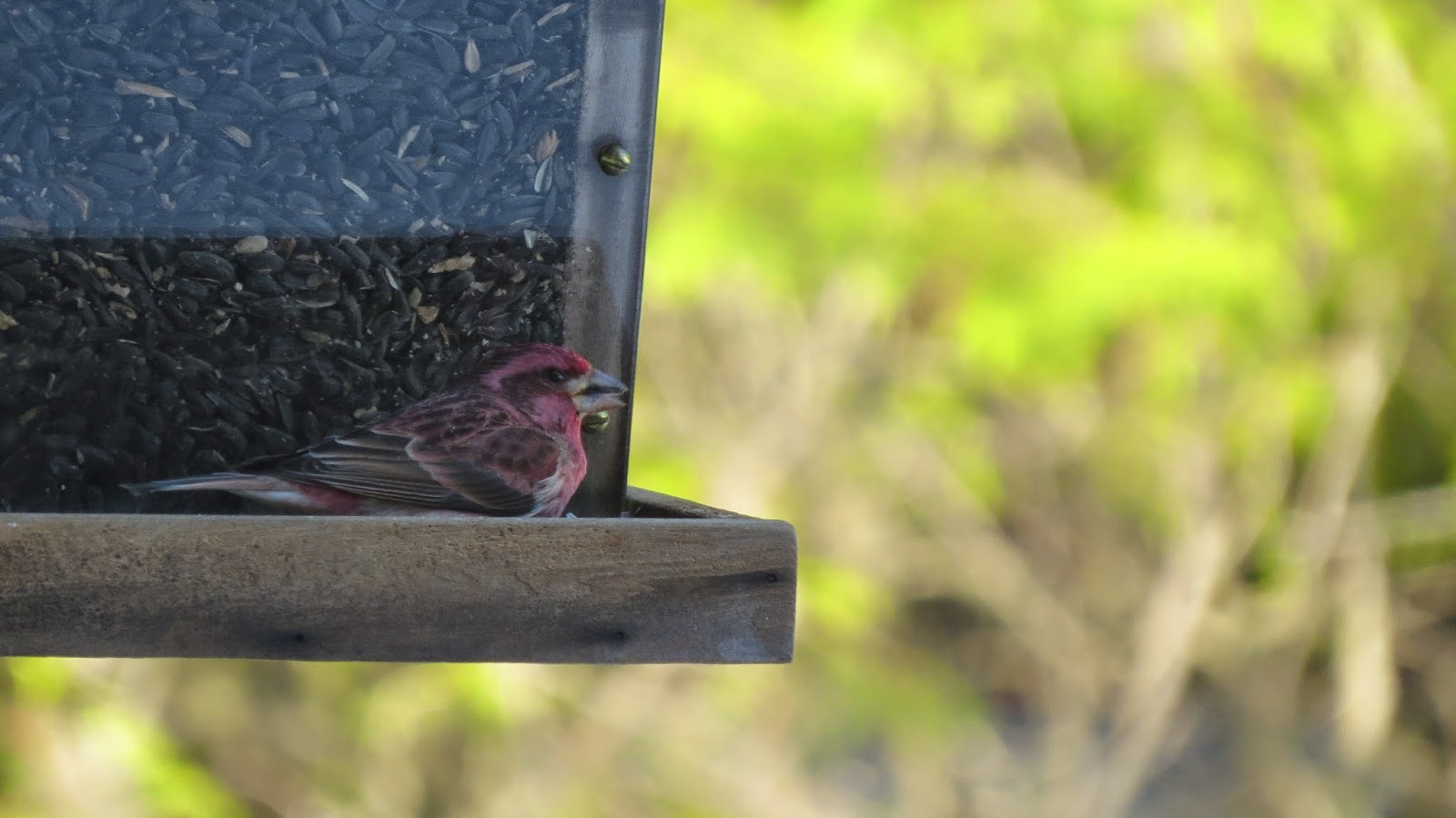One of the warmer days of March; finally the sap flow was excellent today. I made arrangements with friend, Steve, to help collect the sap at 5 PM. Before that event, we drove to Arnprior, Ontario where our Club, The Macnamara Field Naturalists' Club, maintains a trail at the Nopiming Game Preserve. This lovely trail begins at McNab St. in Arnprior and wends its way through 4 kilometres of multiple habitats, and also includes a spur which goes down to the Ottawa River at Marshall's Bay. The Club is planning an extension across the Bay, back to the kiosk at McNab St. More about the trail and (eventually...keep on returning to find out more) our plans to extend it may be found here:
http://mfnc.ca/macnamaratrail.html
We haven't seen this level of snow pack at the end of March in several decades. A long cold winter is hard on much wildlife, birds included. If you begin feeding birds, they become dependent. So be sure to continue feeding until their natural food sources are once again available.
Here you can see Steve filling the feeders on the trail. Large flocks of Purple Finches, Goldfinches, Black-capped Chickadees and Woodpeckers (which along with Nuthatches prefer suet over oil seeds or Nyjer seed). Steve has filled these feeders with much more seed than in other recent years.
 |
| Chickadee Awaits |
 |
| Female Hairy Woodpecker takes a break from the nearby suet |
We then made our way to the Sugar Maples, where Bob, David and Bruce joined Steve, Joan and me to collect about 35 gallons of sap (which yields about 0.9 gallons of syrup when boiled down). As we entered the maple bush, I noticed a Barred Owl swooping down onto an unseen rodent (unsuccessfully). You can see the owl checking out movement in the snow, and some seconds afterwards, it swooped down again. Yes Barred Owls will hunt in the afternoon, especially with increased food requirements, as we enter their breeding season.
 |
| The team collects sap |
 |
| Barred Owl ignores us, as a snowbound rodent captures interest |
 |
| Sap bucket |
 |
| The sled makes hauling manageable |
 |
| Steve works and smiles for the camera |
Steve collects sap in traditional pails hanging on spiles drilled by hand into maple trees, about 4-5 feet above the ground. He uses a sled to drag full buckets back to truck he uses to bring the containers to his boiling site.
At Steve's home, many more Purple Finches have been taking advantage of the free food.
After snowshoeing through thick, deep, wet granular snow, the legs can use a few days rest!
A few days later, I visited the Remic Rapids at the Ottawa River. Rapids do not freeze, even in cold winters like this one. So waterfowl and gulls can be found here, as they return from their migration. The Mallards may not have migrated at all, as more and more of them stay in the open water around city parks where they scrounge for food.
 |
| One of the first Canada Geese to arrive at the rapids |
 |
| A Mallard drake and hen trudge through the snow beside the rapids |
Common Goldeneyes only migrate as far south as they need to in order to find open water. Therefore, they usually are found throughout the Great Lakes-St. Lawrence Region during winter, even this winter! They nest through much of Canada south of the tree line, as they prefer to nest in tree cavities.
I find it amazing how they stay warm feeding in the coldest waters where they catch invertebrates, some small fish and bits of vegetation.
 |
| A pair of Goldeneyes in the water, and a Ring-billed Gull on the ice |
Migration is on and the Spring ephemeral flowers will be showing soon, so expect more from this blog shortly.




